The transcript from this week’s, MiB: Paul Zummo, Chief Investment Officer of J.P. Morgan Alternative Asset Management, is below.
You can stream and download our full conversation, including any podcast extras, on Apple Podcasts, Spotify, YouTube, and Bloomberg. All of our earlier podcasts on your favorite pod hosts can be found here.
~~~
Barry Ritholtz: On the latest Masters in Business podcast. I sit down with Paul Zumo, he’s Chief Investment Officer at JP Morgan’s Alternative Asset Management. He co-founded this group back in 1994 with essentially pocket change. It now runs over $35 billion in assets for institutions and high net worth investors at JP Morgan. Really just a fascinating concept of everything about how to stand up a division within a large company, how to think about alternatives, how to recognize when an industry may be average, but the best players in that industry generate significant alpha. I thought this was fascinating, and I think you will also, with no further ado, JP Morgan’s. Paul Zummo,
Welcome to Bloomberg.
Paul Zumo: Thanks for having me. Great to be here.
Barry Ritholtz: I’m so excited about this because I just fell in love with your 30 pearls of wisdom. We’ll get to that later. Let, let’s start with your background. Sure. Bachelor’s from SUNY Albany and then an MBA from New York University. What was the original career plan?
Paul Zumo: Sure. So, yeah, when I was young, I was always into, always into investments or at least intrigued by investments, but also into technology as well. Like arguably my, to, to the extent we have a, a gift in life. It was probably technology, but the technology was so early stage. I, I didn’t exactly know what it, what it was. So I wound up, I wound up pursuing, obviously an investment side, but kind of used that technology from time to time, especially as we were, we were building a group, but originally I, I really wanted to get into, into equity research. And, and not that I knew exactly what it was, but it was the most like tangible and aligned with who I am in terms of, you know, problem solving and analytics and, and things like that. And wound up instead falling into the, the hedge fund world and doing what I do today as hedge fund solutions, which actually has a lot of elements in, in a sense of what equity research is. Again, you know, you, you, you’re problem solving at, at, at its core and doing analytical work. You,
Barry Ritholtz: You get the chartered financial analyst designation and you start at Chase as an analyst. What sort of work were you doing there?
Paul Zumo: Yeah, so at a outta a school I was in a pension fund consulting group. And so really what you’re doing is a, a couple things, I mean, one performance measurement across client accounts and, you know, also you’re doing some, some research stock rather manager selection on a traditional side. But I think what was helpful about it is it kind of gave you a really good purview of all different asset classes and all different styles of management. And I remember in our early days really appreciating like the, the importance of stylistic differences in equities as an example. This was, again, early days, but like recognizing, you know, small cap world versus small cap value and a drastic differences. But it really, it really has just set the stage to understand the industry and styles and types and approaches at a, at a much deeper level.
Barry Ritholtz: So you were a manager of retirement plans at the Interpublic group. Tell us a little bit about that.
Paul Zumo: Yeah, so after Chase, so I spent about two years at, at, at Chase and then went to the anti-public group. So this is a, a, a plan sponsor and maybe a, a somewhat unusual move at that stage in my career. And what attracted me to it was they, they were at a point where they were, so again, this, this is an advertising agency, but I worked in the pension fund group and they were, they were looking to revise their asset allocation materially. So, you know, change the whole asset allocation, change the manager lineup. And importantly they, they didn’t have a consultant, so they were doing it in-house. So they were affording me, I mean, not solely, but affording me a lot of responsibility to help restructure the whole plan, terminate managers, onboard managers.
Barry Ritholtz: What year was that?
Paul Zumo: So that was 1992 to 1994. And interesting.
Barry Ritholtz: I’m curious what led them to say, “Hey, we’re just going to start over.”
Paul Zumo: Well, that was, yeah, I mean, that was before, I mean, that was a kind of a decision I’d had already been made and they were changing, you know, again, changing their asset allocation and, and looking at the whole manager holistically. And interestingly, that’s when I first got involved in hedge funds, or at least first met hedge funds. So this is again, you know, early days, right? 19, 19 92.
Barry Ritholtz: Everybody was producing Alpha back then, right?
Paul Zumo: Well Then, yeah, I mean then it was, that’s true, but it was so unknown, you know, so I, we, I met with a number of kind of market neutral equity managers, a couple long short matches. And then, and then importantly David asin. So, you know, David asin, for those that don’t know, was one of the, really the first hedge fund, for lack of a better word, blowups, where it was a mortgage backed derivative manager and, you know, obviously a quirky ish market and, and, and wound up having significant problems. So it was, you know, we did not invest with him, but it was really a, a very, you know, valuable early kind of lesson from a due diligence standpoint that, you know, obviously we didn’t pay for. So all, all, all the better, but it, it really like, I dunno, may maybe tells you two things. I mean, one, if you don’t completely understand something, and admittedly at age 24, I, I didn’t at the time then, you know, stay away, don’t put money, don’t put money there and, and, and just have the courage to say, to say no. You know, there’s, there’s a lot of choices out there and you need to be disciplined and, and walk away. But we did invest in an equity market neutral fund. And again, that was 1993.
Barry Ritholtz: So that’s the initial exposure to hedge funds. How did you go from there to JP Morgan?
Paul Zumo: Yeah, so this is probably another, you know, never burn your bridges, which, which I’ll come to. So I had, I had, as I mentioned, I’d worked at Chase once before and at the time I was looking to leave because once you restructure the plan, there’s only so much to to do, especially when you, when you’re young. So it’s ready, you know, it’s ready to, to do something different.
Barry Ritholtz: Do you literally put yourself out of a job through the restructuring process?
Paul Zumo: Well, I mean, I could have stayed, but then you’re just, you know, you’re just overseeing the investments as opposed to-ing more actively. It’s a little less interesting. And so any any case, I was interviewing at a hedge fund solutions, a fund of funds out on Long Island and, you know, really liked the guys, couple of great guys that were there. But at the end of the day, I, I decided I didn’t want to go, you know, I didn’t want to reverse commute ’cause I was living a sit-in, I didn’t wanna go out to Long Island, so I wound up not pursuing it. But the relevance of that is that what would become my, my boss, Joel Katzman was distributing that, that fund of funds. And he was at Chase. So when it came time to do a, a reference check on me, they asked Joel to do a reference check on me. ’cause he was at Chase. I used to work at Chase and the reference check I assume was good, but it turned out I didn’t pursue it any further. And Joel, who was distributing the fund of funds at the time, got the idea of, you know what, rather than distributing it, maybe we should start this up anew. And if you wanna work in a city, why don’t you come work for me.
Barry Ritholtz: So you’re at Chase, which even back in the early nineties is still a very large bank. This seems very entrepreneurial, very startup like what was it like building this division inside a giant money center bank?
Paul Zumo: Yeah, no, it, it was great. You know, I mean, you know, bear, bear in mind it was a different world back then in many ways. Not only from an investment standpoint, but like what it takes to launch a new business. So yeah, we, we launch with a whopping $7.4 million, right? Which is, you know, which is unusual to say, to say at least walking around
Barry Ritholtz: Pocket money.
Paul Zumo: And, and I’d say yeah, maybe a, a couple. So like from an investment standpoint, it was the perfect time to start. You had ar you know, orange County issues, issues. You had, you had rates going up, you had, well David asking, as I mentioned before, you had dislocation and that created opportunities. The problem was, you know, not many people knew about hedge funds and I’d say three quarters of the people that did had a negative view. Oh really? Even in
Barry Ritholtz: Even in the early nineties. ’cause yeah, my bias is that the golden era of hedge funds was from the early nineties, right up to the financial crisis. There’s been far more challenging period, financial crisis for alpha generating the nineties, it seemed like everybody was making money.
Paul Zumo: Well, so two thing, I mean, maybe we’ll get to those points later about, about different, different cycles. But again, from an investment standpoint, I, I, there were, people were making money, there’s no question about it. I think the public’s view, and partially like what had often been written in, in, in the press was the negative side of, of hedge, you know, hedge funds going after this currency or that currency. And I, I think the perception was one of, you know, I either it was negative or just a lack of understanding. So a lot of what we did early days was just educationally, like, we would write newsletters internally and educate people on alternatives, but eventually, you know, eventually you put it together and performance kind of speaks to itself and you, you know, you build it, you build it over time. But it was great from an entrepreneur entrepreneurial standpoint, this kind of goes back to my tech side as well. I mean, one building infrastructure broadly and process,
You know, early days building technology as well. Like there was no per track, which is something people use like, so, you know, we, and I kind of built it all. So built a research database, built a a built a a system to analyze returns and yeah, that was, that was great. It was a lot of, a lot of fun.
Barry Ritholtz: So today it looks like the industry is much better known. There’s been a giant movement to try to democratize access to all sorts of alternatives from hedge funds to private credit, private equity, real assets. What do you think led to this massive interest in alternatives? It’s not like it’s been a terrible equity market for the past 15 years.
Paul Zumo: Yeah, it’s been great. So , two things.
I’d say even, let’s go back early days, like part of the vision, this is really, you know, Joel’s vision first and foremost, that was that alternatives were gonna become mainstream, which, you know, sitting back and hedge funds were gonna become mainstream eventually. And then, you know, back in 1994, that was a novel concept, you know, it was just this little thing off to the side. And, and look, we’ve more or less kind of arrived at that, right? So I think the vision is true. And then the second part is, well, why not retail investors? Right? And if you think about 2022 and you think about rising stock bond correlations, you know, there’s so many investors, many of ’em were retail oriented or, or, you know, high net worth oriented that just don’t have alternatives or enough alternatives in their portfolios. So yeah, that’s led to the democratization and, you know, launch of interval funds and, and, and tender off of funds, which is I think really interesting. So it’s giving those investors access to alternatives which are really valuable in overall portfolio context. And so it it’s about building, yeah, I mean, yeah, just to, to, to respond like, sure, equity markets are going up today, but they didn’t in 2022. And I think the takeaway is that you need to build a more resilient portfolio rather than just look at these things in isolation.
Barry Ritholtz: So you start with barely $7 million today, you have over $35 billion that you’re directly overseeing JP Morgan Chase’s giant with trillions of dollars. It sounds like there’s a whole lot more headroom for alternatives at JP Morgan to continue growing. Like, where do you see this going?
Paul Zumo: Yeah, I mean, you know, alternatives are, are definitely the fastest growing or one of the fastest growing areas within, and not, not just hedge funds, but more broadly. And there’s a tremendous amount of support for it. So, yeah, I like, I, I think, you know, for us and for other alternatives, we’re gonna, you know, continue to build, continue to launch new product, continue to, you know, get, get a larger reach into, in, you know, in, into other client types and, and, and geographies. So yeah, the future is extremely exciting. So
Barry Ritholtz: I mentioned earlier 30 pearls of wisdom for 30 years. I wanna dive into that in a moment. I have to start with one quote that kind of caught my eye, and we talk about this all the time. “Culture is king, the road to failure is paved with poor cultures”. Explain what led you to that conclusion?
Paul Zumo: Well, experience. I mean, you, you, I don’t know, I mean, hedge funds fail for and, and succeed for, for different reasons, but culture is definitely at, at the heart of many of it. And I’d say more importantly, like sometimes people ask what are, you know, what, what’s, like, what do you think about most as, as your takeaway having been doing over 30 years? Like for, for us it’s, for me it’s culture. Like the culture that we’ve built as an organization has been spectacular and clearly a differentiator.
Barry Ritholtz: But is that what’s kept you at JP Morgan Chase for 30 years? That’s kind of rare these days. Most people don’t stay at one shop almost their entire career.
Paul Zumo: Yeah, it’s a, it’s a couple things. I mean, culture and, and the team, you know, it’s like a family for sure. And we, we make each other better. We challenge each other respectfully. We, we really enjoy each other’s company and, and appreciate our, our differences. So yeah, that, that’s been, that’s been great. Leadership of Jamie is, is unparalleled. So that Jamie,
Barry Ritholtz: Jamie…?
Paul Zumo: Jamie Dimon
Barry Ritholtz: I’ve heard of him. Remind me to tell you a funny story about him later.
Paul Zumo: And, and then lastly, like, you know, the, the job itself allows you obviously to meet with some of the, you know, best investment minds in the world, right? Which is just such a privilege. And then to be able to like, dig in deep on so many different asset classes, so many different geographies, you’re, you’re constantly learning. Hmm. So those, those three things for sure.
Barry Ritholtz: I mentioned you are not exactly very public facing, you’re a little below the radar, but you publish these really interesting things. And one of my favorite pieces you wrote was 30 Pearls of Wisdom from our last 30 years.
We don’t have time to go through all 30, but I picked a few that they’re just so simple and yet so insightful and we tend to overlook things like this. This one just jumped out,
“Don’t buy the portfolio, buy the process: Stories change, positions are fleeting, but a robust investment process should endure.”
Like that just sums up so much in, in two sentences. Tell us about that.
Paul Zumo: Yeah, no, it’s definitely one of my favorites as well. I, I, I mean it applies to like all different types of hedge funds, but I’d say especially discretionary macro, right? So you’re interviewing a discretionary macro manager. The vast majority of ’em are very smart. They tell a very good story, they have great views, but it doesn’t necessarily mean they’re a money maker, right? And, and again, I think sometimes people make the mistake of agreeing with the view, agreeing with the manager, getting, you know, seduced by someone having insight. And that obviously it’s really important. But again, it doesn’t necessarily speak to the process. And especially in something like discretionary macro, where it’s, it’s not a high sharp strategy. It tends to be more volatile strategy. And if you don’t develop that conviction, and again, first and foremost in the process, you can get shaken from, you know, from that idea, right? The ideas change, the process should endure. So really, really important for sure,
Barry Ritholtz: “Have the courage to make mistakes, mitigate unnecessary risks, but take calculated bets.”
Again, two simple sentences, so much involved in that. Yeah. I find a lot of people in our business don’t like to admit mistakes.
Paul Zumo: Yeah, I think it’s, it’s, it, it’s something not, not the admitting mistakes so much, but the, the, the courage to make mistakes. When I think about take a risk, a calculated risk,
When, when I think about like, things that I’ve done better over the years, that that is definitely one of ’em that comes to mind where I, I’ve given myself more freedom to, to, to make mistakes and to maybe size and lean into themes or, or high conviction managers to a greater degree as well, where I think, you know, maybe there’s a perfectionist in many of ’em, many of us. And sometimes the flip side of that, or the problem with that is you become too conservative, right? So now, yeah, if you make a mistake, you need to, you need to figure it out quickly and, and change course. But allowing yourself to maybe make mistakes is, is, is definitely helpful.
Barry Ritholtz: I really like this. “Don’t be afraid to run into fires.” Some of the greatest investment opportunities and manager access are sourced during dislocation. Tell us about running into fires.
Paul Zumo: Yeah, so this, you know, is, is obviously really important. Like I, I I love behavioral issues and behavioral finance and, and, and like the challenges that come to that. Of course, we’re all wired, you know, inappropriately from an investment standpoint and that we’re, you know, we’re wired to avoid avoid pain, which is why many people make the wrong decisions during, you know, periods of crisis or periods of heightened volatility. I think some managers do a great job. You know, I wrote it about, you know, I guess the manager had in mind was David Tepper, you know runs into fires all the time, you know?
Barry Ritholtz: He moved to Florida kind of chilled out a little bit,
Paul Zumo: But he, I, you know, like he, he, again, having watched things play out over 30 years, I always thought he, he did, you know, he’s done a really good job. But, and again, like this is something I think we’ve done a better job at over time as well. When I think about, you know, the crisis, you 1998, 2008, 2020, like, you know, as they say, many of these things rhyme and you’ve seen it before. Like, you know, you, you know, what it feels like kind of coming out of it and going in. And if you’re playing appropriate defense, like you should afford yourself the opportunity to really lean into where you think there is dislocation, especially more technical oriented dislocation. So yeah, it’s, it, it’s critically important. I mean, that’s where you make outsized returns during those inflection points.
Barry Ritholtz: Let’s talk about outsized returns. Success can be a dangerous achievement. Complacency, distractions and misalignments can be silent killers.
Paul Zumo: Yeah. So I guess you could come at that one from a, a, a couple of different ways, but one of, one of which the most important is like when you find success, sometimes people, you know, the, the firm grows, the number of analysts grow, the complexity of the business grows, and the portfolio manager, you know, goes from managing portfolios to managing people. And you like, I’ve seen that movie so many times like that. Maybe
00:20:44 [Speaker Changed] They have that skillset, maybe they don’t
00:20:45 [Speaker Changed] And maybe they don’t, and that, and that’s probably not where you want them to spend their time, you know? So I think like if you think about the hedge fund graveyard and like what the issues have been over this like that, there’s a big area that kind of has that, that footprint if, if you will. So yeah. People, you know, the star portfolio portfolio manager no longer spending the appropriate time on a portfolio, managing people, getting distracted, or the second piece of it is just quite frankly, making too much money, right? So, you know, when, when I, when I bought the third yacht, I
00:21:17 [Speaker Changed] Was about to say, it’s that
00:21:19 [Speaker Changed] It’s time to leave, you know, it’s probably time to leave after, before the first yacht, but the
00:21:23 [Speaker Changed] First time I heard that has to be like 20, 25 years ago. Hey, when your fund manager buys a 40 foot or a 50 foot boat, it’s time to move on.
00:21:33 [Speaker Changed] Yeah. I mean, it, it’s more than that. But yes, you have to, you, you have to watch the personal lifestyle at times as well, and it makes sure people are focused. Now, you know, there are people that, that are, are billionaires and they’re still in the office, right? 70 hours a week. Right? But, and it’s, it’s just an eight. They don’t, they couldn’t do anything but that. But yeah, you have to, you know, you, you have to understand what, what am I buying? And, and maybe it changes, right? So maybe that star portfolio match is built out enough of a team and you’re not buying anyone singularly, you’re buying something broader and that process
00:22:09 [Speaker Changed] You mentioned earlier,
00:22:10 [Speaker Changed] But, but yeah, it’s, it’s, it’s a risk for sure. And it’s, and it’s an area where many of successful hedge funds have kind of either become, you know, potentially mediocre or have had challenges because they’ve taken her eye off the ball in one way or another.
00:22:24 [Speaker Changed] Huh, really, really interesting. I love this one. The opposite of long is, in short, great short sellers are wired differently. Don’t expect success on the long side to necessarily translate to a successful short book. First. I love the quote. Second, are there really any short sellers left? I think this last run feels like it. They steamrolled over everybody.
00:22:47 [Speaker Changed] So yeah, maybe a couple things. So I mean, just on the quote itself, I have to like, of all the lessons learned and all the mistakes we’ve seen people make, that that one has probably right at the top or certainly right toward the top. Like the, the opposite of a long is definitely not a short, and, you know, sometimes people will, will suggest it is, I mean, the math is different, risk management is different. It like the, the timing is different. And like, I I would even say like, successful shorting is about risk management first and stock picking second. And you see that, I mean, you’ve seen that when the, you know, 1999 when the internet is blowing is, you know, going nuts. You see that in the meme stocks, you see that today with quantum computing and some of the AI names, again, it’s risk management first. Stock picking second timing is critical. Timing and sizing is just
00:23:41 [Speaker Changed] Critically,
00:23:42 [Speaker Changed] Critically important.
00:23:44 [Speaker Changed] Go ahead. I was gonna say, I have a buddy who used to run a hedge fund trading desk, and he always used to say the opposite of love is in hate. The opposite of love is indifference. There you go. And it, it’s the same basic kind. And he was talking about stocks, but it’s the same sort of thing. They’re not mirror images, are they?
00:24:01 [Speaker Changed] No, definitely not. Are
00:24:03 [Speaker Changed] Are there any short sellers around, I know like one 30 thirties have become popular. Yeah. There and a lot of quants approach it that way. So
00:24:10 [Speaker Changed] Maybe there’s two, you know, two different aspects of it. So there, there are successful and, and good short sellers out there. I’d say there are, there are, you know, less that are dedicated short sellers. So from 1995 to 2008, we used dedicated short sellers and short bias managers. And it was really interesting and actually a tremendous source of overall alpha after 2008. We no longer use dedicated short sellers and short bias managers. So I, I don’t follow the space nearly as much, but there are, you know, there, there are certainly good ones within long short equities, you know, maybe, you know, I’m sure there is some on a standalone basis. It’s a, it’s a very difficult business model. Yeah. Tough, tough gig. And one, one of the interesting things in short Sound, which I think people don’t, you know, I don’t know, I’ve never heard it spoken about before, is, you know, and this, again, this is dated, but the, when you, when you looked at again, let’s say pre 2008 where there were probably, I don’t know, I don’t know, there’s, you know, a certainly a few dozen dedicated short sell and short bias managers.
00:25:10 I wanna say like 40% of them were women, really? Which, which people own. That’s fascinating. You know, so Charlotte, you, Stephanie, Ross, Dana Ante, like all, all these, you know, very successful short sellers and in an industry that was more male dominated, it, it always struck me as just really interesting that in that segment that, you know, an an overwhelming amount, at least on a percentage basis, right? Maybe, you know, maybe it wasn’t greater than 50%, but like,
00:25:38 [Speaker Changed] But compared to the rest of
00:25:39 [Speaker Changed] The industry, it was outsized. It was, it, it was outsized, you know, which is, it is interesting, there
00:25:43 [Speaker Changed] Have been a number of academic studies that say female fund managers outperform their male counterparts by anywhere between 50 and a hundred basis points. And it’s always, you know, the joke is testosterone poisoning. But it’s fascinating to hear. I’m, I’m curious as to why female short sellers, I, is it an objectivity? Is it just a different approach? It’s kind of really intriguing. Yeah.
00:26:13 [Speaker Changed] Well my wife would probably say it’s, it’s, it’s because they don’t have the egos of the man, right? That’s the poisoning. It’s absolutely, if
00:26:20 [Speaker Changed] It doesn’t work out, they cover it and move on.
00:26:21 [Speaker Changed] Yeah, I, you know, I think there’s probably some, you know, of, of course there’s great examples of both, but I, you know, again, risk management and discipline is definitely, is definitely the key to successful short selling. So let’s, that has to be something about it. Let’s,
00:26:36 [Speaker Changed] Let’s go with another bullet point that speaks directly to that. I love this one. Avoid casinos. Black isn’t on a roll and red isn’t due. Very few managers add value over time through timing the market. Even if it sometimes look like, looks like it. Don’t reward a manager for gambling. Yeah. Again, so much insight in two sentences, explain how you reach this conclusion, which I just think is brilliant.
00:27:04 [Speaker Changed] Yeah. So I, I give credit to Chris Marshall on the team. He ca I think he, he’s the one that came up with that quote. But it, it really again, is the observation that the vast majority of managers are, are, you know, the vast majority of of them are good stock pickers, but bad portfolio managers and
00:27:26 [Speaker Changed] Two, making skills. It’s two different
00:27:28 [Speaker Changed] Skills. Yeah. And timing decisions, you know, the vast majority of managers are, are, are subtracting value from that portfolio manager decision.
00:27:36 [Speaker Changed] Really? The vast ma you’re gonna say top quartile. Top decile. Where, where’s the alpha coming from?
00:27:41 [Speaker Changed] I mean, the alpha’s coming from, like, if, if you look at, let’s put it this, if you look at fundamental long short equities that live within the pods, and you look at alpha generation with them on, on, you know, eternal leverage or whatever you wanna say. And then you look at the standalone long short universe and the alpha that’s generated there, there’s a disconnect, right? And it’s not because they’re not good stock pickers. The disconnect I, I think is because the portfolio manage, you know, bad portfolio management or subpar portfolio management is subtracting value from their stock picking. So maybe they’re adding, you know, 5% of alpha in the stock picking and decaying that by 3% from, from portfolio management decisions. And I just think it’s, it’s difficult and, you know, there, there’s been tremendous factor moves in the last number of years. There’s also issues when you’re operating on a standalone basis. Like there’s business considerations rightly or wrongly, right? So if someone’s operating in a 10 vol and markets are going down and they’re, you know, in a hole by 8%, now are they acting differently from a po You know, they should be buying a lot more ’cause the markets are down and things look interesting. But are they, are they, you know,
00:28:52 [Speaker Changed] They’re playing scared,
00:28:53 [Speaker Changed] They’re playing scared, you know, and I, I think it’s, again, it’s not, it’s not everybody for sure. And there’s some that do it. Well, I just think it is very challenging to do, you know, it’s, it’s much easier to find good stock pickers that are adding alpha than it is for someone to consistently be able to make, you know, I dunno, contrarian or, or correct portfolio management systems. Well,
00:29:18 [Speaker Changed] The, the old joke is the crowd is right most of the time. So if you’re, if you’re constantly fighting the crowd, you’re on the wrong side of the trend. Yeah,
00:29:25 [Speaker Changed] There you go.
00:29:26 [Speaker Changed] Last one. And, and again, another, another brilliant one, dinosaurs go extinct. Innovation must be constant.
00:29:34 [Speaker Changed] Yeah. And this is for, you know, this is for hedge funds as well as us. And you know, and part of it relates to the managers themselves part, it relates to strategies, and again, part of part of it is business model. But when I think about, you know, I think about strategies that we used to invest in in 1995, where you can make a lot of money, like let’s say merger arbitrage, you know, like merger arbitrage. Again, you could, you could make double digit returns. It was less competitive. Plus you need mergers and you, well, yeah, that, that, that helps for sure. But now, like the strategy, I mean, there are some very successful people that do it on a standalone basis. Usually they do it with credit or other events, but like, it’s a much more difficult place to make money. It’s, it’s become largely commoditized. When it becomes interesting, there’s a swarm of money that will kind of go into it, right? Isn’t That true?
00:30:20 [Speaker Changed] For every style of is sector,
00:30:22 [Speaker Changed] Which well, eventually, which is why you need to innovate, you need to, you know, so let’s take you like machine learning quant, right? Like machine learning quant started investing 10 years ago, like that was novel. And, and you know, today it’s obviously gaining a lot momentum. People understand it more, but you have to kind of continue to reinvent, like from our perspective, need to continue to do, look after different strategies, different types of managers to find kind of high alpha. And then from a manager standpoint, again, let’s think about quant again. The managers need to re reinvent themselves and refine themselves from an alpha standpoint. So like alpha’s decay, you know, yesterday’s alpha’s, tomorrow’s beta, right? And, you know, a lot of what has made them successful from an alpha standpoint is gonna decay. So if you don’t, you know, maybe it’s 15, 20% is gonna decay and, and be irrelevant each year. So you need to constantly kind of reinvent
00:31:22 [Speaker Changed] Yourself. So, so when you start putting together the next 30, over the next 30 years, yesterday’s alpha is tomorrow’s beta. That, that’s number 31 for you. There. There you
00:31:31 [Speaker Changed] Go. That’s right.
00:31:32 [Speaker Changed] So let’s talk about what’s going on today. Hedge funds have had to adapt to a very challenging era, certainly since the financial crisis. I, I’ve heard financial repression and all sorts of reasons for why some funds have been underperforming, less volatility, increased dispersion and equity returns, what’s going on in the world of, of hedge funds today. So
00:32:02 [Speaker Changed] Yeah, the, the last five years especially have been a great time for, for hedge funds. So let, let me, let me maybe frame it and, and actually we just came out with a paper called hedge funds in the end of the Alpha winter. And I, I should do a shout out for Emmy Hodges who did a, a great job on, on, on putting the piece together. But maybe it’s just taking a step back. There, there were, we identified kind of three big picture variables that really drive excess return in hedge funds. So one of them is volatility. Everything else you could want volatile higher, that creates dislocation, sloppy trading, you know, it’s kind of opportunity. Opportunity. It’s the fuel, the fuel of what drives alpha, right? The second is dispersion. So equity dispersion for first and foremost, but wider dispersion as well. So more winners and losers.
00:32:48 You know, obviously if you’re a stock picker, that’s helpful. And the third is, is rates being higher than 2%? And higher rates help in a number of ways, but both kind of mechanically. If you, obviously if you have floating rate debt, it’s hopeful higher rates, but also, again, we’ve seen this like in a period of rising inflation where rates are going higher, that’s gonna fuel increased volatility. So it’s a little circular, right? But elevated volatility, or at least normal volatility, elevated dispersion and rates that are greater than 2% when you have those three elements. So even two of those three variables kind of as a, as a tailwind rather than a headwind. Alpha generation is really, really strong. So what we’ve done is like, we looked at three different periods. The first starting with, with 2000 ish, kind of a 10 year period, you know, I forgot exact percentage, but like a large percentage at the time, two of those three variables were, were at your back, they were helpful and you saw excess return that was very, very high. The middle period, which is the alpha winter, you had
00:33:55 [Speaker Changed] 2010s, is that what we’re talking about essentially?
00:33:57 [Speaker Changed] Yeah. To, to two 2000 and, and 10, right? The middle period, which is I think, you know, nine-ish or year, you know, eight, nine year period, which in middle is quite long, was one that where you saw a lot of central bank intervention where those variables were generally, you know, depressed. You could think about 2017 realized valve being really low. Obviously we had rates at zero for a chunk of that period as well. That was difficult to generate alpha, not only for hedge funds, but more broadly. And that’s kind of the alpha winter we would suggest that that period is abnormal. And you know, even if rates go down, even if all comes down, like you are not, not likely to go back to a period that’s so dominated by that period of central bank intervention. And you know, most importantly, the postscript to that is for the last five-ish years, you’ve gone back to kind of the good old days of alpha generation, right? So last five years you’ve had volatility that’s, you know, generally normal or, or or higher dispersion that’s really high and rates that are are accommodative as well. And excess return on alpha has resumed and looks very much like what it looked like 20 years ago versus that kind of middle alpha winter period.
00:35:13 [Speaker Changed] So, so the past five years have been really interesting. 2022 obviously stocks and bonds down double digits. That seems to happen once every 40 years or so. Yep. What, what about 2025, what sort of role is deglobalization and shifting trade policies playing in shaping hedge fund returns?
00:35:33 [Speaker Changed] Yeah, I mean it, well obviously you have a lot of different, so, you know, it’s a lot of different strategies, a lot of different sub strategies. So it’s very difficult to talk about the whole hedge fund industry, right? As, as, as one thing. But like when I think about excess return, you know, all the things that you mentioned are generally good for hedge funds, right? So the rest of the world is getting worried. Like that is again, the fuel of what drives hedge hedge fund returns, right? So when you see, when you see, you know, rising, rising vol and that’s, that’s gonna be good from Cisco arbitrage, it’s gonna be good generally for balanced stock pickers. It’s gonna be good for discretionary macro managers. When you see deglobalization and some of the trends that come out of that, whether it’s onshoring, whether you see some of the moves in, you know, in, in, in, in gold and like that, that’s good from a trend falling standpoint. It’s good for discretionary macro managers. When you see Japan rise increasing rates, the US decreasing rates, that’s hopeful because it’s two bets that you discretionary macro mags took in place. It’s not just like everyone operating in the same way. So those things are, are good. I mean, generally because it gives people more of a, a palette to, you know, an alpha pal to which to choose from place, more bets, diversify more, and also heightened volatility and heightened uncertainty is gonna be positive for the vast majority of strategies, especially from a excess return alpha standpoint.
00:36:58 [Speaker Changed] So you mentioned Japan. I’m curious what regions around the world are attracting the most new capital. We’ve seen Europe suddenly catch a bid. Yeah. Obviously Japan has been doing well, the rest of Asia and the Middle East and even the US Yeah. What, what areas are attracting new capital and what’s driving that
00:37:16 [Speaker Changed] Trend? Yeah, I mean, the thing, one of the areas that we’re most excited about for sure, and have been leaning in for the last three years is Japanese corporate governance. Now, interestingly, if you look at dollar flows into Japan, it’s actually not, I mean, it, it is positive, but it’s kind of modest in the grand scheme of things, which kind of shocks me honestly. And like, I, I don’t, I don’t mind because we’re playing events first and foremost, but you, you really haven’t seen that many dollar flows in, which again, is unusual given like everyone in the world in, in, in every way, shape or form is probably underweight Japan, right? And it’s, and it’s obviously inexpensive, but most importantly you have a material dramatic catalyst that’s driving value through, through Japan. And yeah, we’re excited about it. I mean, corporate, corporate governance has been talked about in Japan for decades.
00:38:01 The reality is until, you know, Abe had his third arrow and you, you’ve, you know, which really set off a, a number of regulatory and policy changes and, and importantly like cra cross shareholder relationships started to unwind that really set the stage for increased corporate governance. So it, it’s, you know, we, we, again, we’ve been there for three years. I think we’re maybe halfway through what needs to be done and, and there’s still a very, very fertile opportunity set. So that’s, that, that’s one. The other thing I I would point out is just the Middle East. Now, obviously, you know, it’s not, it’s not to say that there’s a lot of money from an investment standpoint going into the Middle East, but I had just come back from a, a, you know, week long trip in the Middle East and, you know, got there maybe 18 months prior and it’s really exciting what’s going on. I mean, clearly there’s a lot of interest from an investment standpoint in hedge funds and alternatives in the Middle East. There’s no question about it.
00:38:58 [Speaker Changed] Is this because all the sovereign wealth funds located in Qatar and, and Arab Emirates and Yeah, go down the list. It, it’s coming
00:39:07 [Speaker Changed] Dubai, it’s certainly coming from, from them, but it’s broader. It’s broader as well. I mean, it’s, it’s family office money in, in addition to the, the sovereigns and, and they’re interested in alternatives. They’re interested in hedge funds, local
00:39:19 [Speaker Changed] Family office or Europe and American Family Office
00:39:22 [Speaker Changed] In the Middle East. All, all, all of the above. You know, I mean, there’s also been, which is a maybe to tie together one other part. I mean, there’s also been a lot of movement of people of, of hedge funds setting up businesses in Dubai, Abu Dhabi, and people moving there with wealth and in turn they become, you know, potential investors in alternatives. So that’s a definitely a, a prominent story as well, the number of people that are setting up in, in, in, in the region or open up offices.
00:39:48 [Speaker Changed] So when, when we used to talk about New York, London, Tokyo, Hong Kong as centers, do you put Abu Dhabi or Dubai in that list? Is the,
00:39:58 [Speaker Changed] It’s it’s, you know, for the larger, for the larger hedge funds for sure. I think it’s becoming, you know, the, the vast majority of ’em are opening offices or have offices in regions. So it is definitely an area that is attracting a lot of, a lot of interest. And then from an investment standpoint, you know, again, it’s a much smaller market, but there, I think the, you know, the, the policy changes and regulatory changes which allow foreign ownership and as derivatives market starting is encouraging as well. It’s early days, and again, it’s not, you know, the breadth and depth of the market still needs to improve, but again, it’s exciting from that standpoint as well.
00:40:35 [Speaker Changed] Hmm. Real, really kind of intriguing. What are hedge funds thinking about with assets like crypto or gold? How are they dealing with, what are some of the biggest winners past couple of years?
00:40:47 [Speaker Changed] So you, you’ve seen, I mean, on, on gold and precious, but I mean, discretionary macro managers have, you know, many have had that bet on, it’s been a very successful bet and theme given, you know, concerns on in inflation and debt levels. So you, you know, you can, you continue to see that, that theme in people’s portfolios. Crypto’s a little more, you know, interesting and, and specific, some managers, again, mostly discretionary, macro managers have invested in crypto mostly, you know, mostly bitcoin or e more from that inflationary, you know, debt standpoint, although others have from other standpoint as well, from a, you know, from like a trend follow standpoint on futures, people have done it a bid on statistical arbitrage side. Some people play from like a cash future standpoint, from an ARB standpoint as well, but it, it’s still small, at least let’s say the traditional hedge funds investing in crypto, it, it’s still small. That being said, obviously you have a large number of like dedicated crypto funds that are trading both directionally as well as as, as well as on the A side as well.
00:41:55 [Speaker Changed] Coming up, we continue our conversation with Paul Zumo, chief Investment Officer at JP Morgan, alternative asset management, discussing the state of hedge fund investing today. I’m Barry Riol, your listening to Masters in Business on Bloomberg Radio.
00:42:26 I’m Barry Ritholtz. You are listening to Masters in Business on Bloomberg Radio. My extra special guest today is Paul Zumo, he’s chief investment officer at JP Morgan, alternative asset manager helping to oversee $35 billion in external hedge fund assets. He’s also chair of the alternative asset Management investment committee. He co-founded the group back in 1994. So what styles in hedge fund worlds are doing well in 2025? I’ve noticed over the past few years emerging managers have made some consistent gains. Quants have done well, some of the multi-strat have done well. What, what are you seeing in, in the rest of the field? Some of which even in this high volatility, high alpha market have been struggling.
00:43:14 [Speaker Changed] Yeah, I’d say so we, we look at Pivotal path as the, you know, their indices first and foremost. I think it’s, they’re the, their very, very good quality indices and I think paints a very good picture. And that’s kind of what I have in mind. So like when you, when you look at it, you’d find that most strategies and sub strategies have done pretty well this year in the grand scheme of things. You know, the one exception to that is, is CTAs, which have struggled even
00:43:38 [Speaker Changed] With gold running away. And
00:43:41 [Speaker Changed] C CTAs got hurt in, in April where they were very, very long equities. And yet, you know, liberation Day, right? And you markets correct a lot. So you, you saw, you know, a, a bit of a, a retrenchment in, in CTAs performance in April, they got hit pretty hor and they’ve been trying to like piece it together and they, and they have, the last couple months have been, have been stronger. To
00:44:04 [Speaker Changed] Be fair, it’s very challenging to follow a trend when the trend is dependent on the whims of one person.
00:44:11 [Speaker Changed] That that is true for
00:44:13 [Speaker Changed] Sure, right. Doesn’t show up what,
00:44:14 [Speaker Changed] But the good news is most other strategies are actually doing, are doing quite well, right? So if you look at across relative value as you mentioned quant, the multi-Strat pods, convertible bond arbitrage has been good with, with strong issuance, discretionary macro as we talked about some of the themes, whether it’s, you know, whether it’s gold or you know, or, or, or rates themes has, has done well as well,And you might say, okay, well the markets are up, but it’s not just beta alpha. So a couple people have come up with, you know, if, if you, if you look at the alpha generation this year, it’s about 5%, five and a half percent in Longshore, which is quite healthy. And even, you know, merger arbitrage events done well, you know, credit’s done fine. So I’d I’d say it’s been a good year overall with most strategies generating, you know, strong, kind single, mid single digit to high single digit returns or high single digit returns. And, you know, overall definitely a good year for the industry.
00:45:12 [Speaker Changed] So we’ve seen the rise of multi-strategy managers over the past few years, and there have been a number of very large multi strats and it seems to be a direction a lot of funds are heading. How has that changed competition within the industry? Are, is there more collaboration within a multi-strategy shop amongst all the different pods? How, how is that playing out?
00:45:36 [Speaker Changed] Well, I think collaboration amongst themselves. Yeah, I think like, I think there’s a pretty,
00:45:40 [Speaker Changed] I’m assuming they’re not competing, they’re not collaborating with the fund across the street. It’s all internal, right?
00:45:47 [Speaker Changed] I’m sorry, collaboration for the pods, pods within with the pod or within the pods.
00:45:52 [Speaker Changed] Collaboration within a multi-strat from, hey, here’s the macro, here’s the long short, here’s the quant group, here’s the trend group. What, yeah. Are we, are we seeing,
00:46:02 [Speaker Changed] So like cross polarization across, across teams? I think it depends on the model. You know, like if you, if you look at the pods, obviously there’s some prominent ones out there. They, they differ materially from like strategies that they pursue. They differ materially from the culture that they pursue. They, they, you know, they, they just differ in the risk management approaches is different. So it, it really depends. I I, there there are some managers where the, you know, where they are benefiting from maybe cross polarization a, you know, across teams or a center book that’s maybe drawing upon best ideas. So, but it, it’s really gonna differ kind of pod to pod based on the style and how they, how they operate
00:46:43 [Speaker Changed] F Fair enough. Let, let’s talk about risk management. There were obviously some lessons learned this year in April and plenty of lessons learned in 2022. What do you think are gonna be the most impactful lessons for managers looking forward?
00:46:59 [Speaker Changed] Looking forward? I mean, things we’re worried about today is just complacency. You know, I mean, mark, anytime you have markets going up for a, you know, for, for a while, inevitably complacency develops in some way, shape or form. So we’re certainly being, you know, front footed and, and having discussions. Where is that? And whether it’s credit or equity markets and like how do we or, or specific areas with hedge funds and how do we guard against that a little bit? But I think some of the events last year, like we’re talking about, you know, liberation day or maybe the deep seek event and, and some managers being, you know, God
00:47:32 [Speaker Changed] Was deep seek 2025 it seems like decade, years and
00:47:35 [Speaker Changed] Years ago, you know, maybe it was, you know, so no,
00:47:36 [Speaker Changed] It was, it was January this year and blew everybody’s minds.
00:47:41 [Speaker Changed] I I mean, I, I think it really underscores a a couple things. I mean, one risk management first and foremost, right? And certainly, you know, certainly on Liberation Day, I think a lot of people were, were caught off balance in, in, in their books. And then again, oftentimes kind of retrench after that. Lock and losses, it’s not a great recipe. So like sizing positions and sizing risk across areas, you know, in, in which people invest are obviously always critically important. And then on deep seek, look, a AI is extremely exciting. It, it creates tremendous opportunities. But going back to what we were saying about short selling before, it also creates tremendous risk and, you know, risk of be just being one-sided bet, but also risk of again, operating in a long, short fashion and getting, thinking about like offsetting risks and, and, and basis and sizing. So those things are cri critically important. Hmm.
00:48:36 [Speaker Changed] So speaking of ai, I just overheard Paul Tudor Jones speaking to somebody on Bloomberg saying, you know, maybe AI might be developing into a small bubble, but it’s not a giant headache. How are you looking at all this bubble chatter, high valuation, concentrated markets? This seems to be part of the wall of worry that markets are, are climbing. What’s your perspective on this?
00:49:04 [Speaker Changed] I mean, if Paul said it, it must be right, so
00:49:07 [Speaker Changed] You could do worse than following Paul Ju Jones.
00:49:10 [Speaker Changed] That’s right, that’s right. I mean, look, is is it a bubble? And I obviously it’s, it’s real, it’s gonna be impactful. It, it’s, you know, it’s gonna be enormously important. It’s gonna reshape how we do so many, so many things for sure. Is there excess in certain areas related to it that there has to be for sure. I, again, I think it comes down to risk management first. And for, you know, assuming you want to set up a balanced book, it comes down to risk management first and foremost. And if you don’t, if you just want to play it from a thematic standpoint, again, it also comes down to risk manage, just from a sizing standpoint, you need to size it to be able to handle the inherent vol volatility of it. But is it rich? Well, of course it’s rich. Is it a bubble? I, I, I don’t, you know, I I
00:49:55 [Speaker Changed] I’m not
00:49:55 [Speaker Changed] Best one to say, but it’s certainly is real. It’s certainly gonna revolutionize and change our lives.
00:50:00 [Speaker Changed] Every time someone asks me about it, I, I like to remind them, Greenspan’s irrational exuberance speech was 96. You still had a long way to go right before that really became a bubble. But also
00:50:12 [Speaker Changed] Look, look at, you know, we were talking about, you know, dot com, right? So I mean, as a little bit of your, you know, your model and your playbook, right? So I mean, obviously Amazon came out of that, but there’s a lot, you know, pets.com, you know, know dating myself, but, you know, and I have
00:50:29 [Speaker Changed] Metromedia fiber, Juniper Networks, I
00:50:31 [Speaker Changed] Stock puppet on, on my desk, you know, like really it is gonna be win, it is gonna be winners and losers, right? And, and it, it is extremely important, extremely powerful, but it’s not gonna lift all boats at all, all times. So you need to be selective and you need to size it. Right. Huh.
00:50:46 [Speaker Changed] Make makes great sense. Last question before we get to our favorite questions. What do you think hedge fund managers and investors are not talking about, but really should be? What, what topics, assets, policies are getting overlooked but shouldn’t.
00:51:04 [Speaker Changed] Well, I mentioned complacency a little bit just ’cause where we are in the cycle, but maybe I, if it’s okay, I’ll take in a different direction to say like, it’s more of a misnomer about the hedge fund industry, which is, if that’s okay. Sure. It’s a little, a little different. So I like, one thing I would say that’s, that’s frustrating I think a lot of people get wrong is they look at the hedge fund industry as an asset class. And what I mean by that is if you have an asset class, then the, you know, everything in an asset class should be more or less, you know, highly correlated to each other, right? It’s the same, it’s the same thing. And if you take the 10,000 or so hedge funds that are out there, the correlation across correlation, pairwise correlation is, is something like point 0.2 or 0.25, nowhere
00:51:46 [Speaker Changed] Near one.
00:51:46 [Speaker Changed] It’s nowhere near one, right? So what you really have is a collection of strategies, a collection of sub strategies. Importantly, the characteristics of those strategies are just vastly different from each other in many cases. And the way you use them in a portfolio is vastly different. So when people think about the hedge fund industry and they’re then, and they’re looking at like a hedge fund benchmark, which is, or you know, like 10,000 funds cobbled together, oftentimes they look at it and they’re like, well, I don’t, I dunno what to make of this. It has an okay return and an okay volatility with okay characteristics, maybe I don’t need it, and it’s the right conclusion to the wrong answer. Right? And, and, and, oh, I’m sorry, the right conclusion from the wrong question. Right? And, and like, again, the observation’s correct, but really the question is, can I look at subsets of this industry that are deeply valuable rather than just looking at the whole thing as a whole? And we would strongly suggest that if people are just looking at the aggregate industry, that missing a point that beneath that there are strategies and substrates and certainly managers that are adding enormous, enormous value that’s being overlooked by, you know, someone who’s plugging the average into an optimizer.
00:53:08 [Speaker Changed] I, I’m, I’m so glad you said that because over the course of 25, 30 years, I’ve watched the hedge fund industry change so dramatically and my own views on it have evolved. It’s very easy to look at a broad index and say, gee, this is expensive and doesn’t generate great returns. But again, depending on where you wanna draw the line, top quartile, top decile, when you look at the top performing funds, there is genuine alpha generation. Yeah,
00:53:38 [Speaker Changed] For sure. And interesting, like if, if we would’ve met, you know, 25 years ago, 15 years ago, like I would’ve said the same thing. Is that like, I, I’m not here to say the hedge fund industry as a whole is such a tremendous value proposition. Like that was never the thesis, you know, the thesis is more, are there a hundred or 200 managers out there that are adding enormous value? Yes. And, you know, can, through great due diligence, like, can myself and other people find them if they, if they spend their time and do a great job? Yes. And is that tremendously value in portfolios? Yes. You know, but it’s not about the hedge fund industry as a whole, and the averages are gonna knock the lights out.
00:54:23 [Speaker Changed] Jim, Jim Chanos has this quote I love. He says, you know, when he started out in the late eighties, early nineties, there were a couple hundred hedge funds and they all generated Alpha. Today there’s 11,000 hedge funds and it’s the same 200 hedge funds generating Alpha. Which do you know, there’s a lot of truth to sturgeon’s law. There’s a lot of truth to 90% of everything is not great.
00:54:46 [Speaker Changed] Yeah. Yeah. I don’t know if it’s the same 200, but Yeah. No, no, you
00:54:49 [Speaker Changed] Said the same number. Not necessarily the same number. Right. Funds they come and go. Yeah.
00:54:54 [Speaker Changed] Look, it, it’s a, it’s an industry and an asset class and a, a, a fee structure that attracts a lot of people. But, and, and, you know, and, and, and many of ’em deserve that fee structure and many of ’em are, are, are great, but yeah, they, you know, obviously you need to be selective
00:55:12 [Speaker Changed] A Absolutely. All right, let’s jump to our favorite questions that we ask all of our guests starting with. Tell us about your mentors who helped shape your career.
00:55:23 [Speaker Changed] Sure. I think, so two, two come to mind. I mean, if I go back really, you know, back to high school, and I’m forgetting, I’m forgetting his name, it’s my wrestling coach. I swear
00:55:34 [Speaker Changed] To God, I knew you were gonna
00:55:35 [Speaker Changed] Say that, you know, as my, yes, my wrestling coach, he was my economics professor. And, and this is when I first started getting interested in, in investments and started reading, you know, I dunno, some of like the classic books from, from way back, way back when, one
00:55:53 [Speaker Changed] Reminiscences of stock,
00:55:54 [Speaker Changed] Reminisce of a stock, you know, and he was the one that kind of encouraged, and we actually played this game at the end of the year, which was like a stock market game. And I actually found an arbitrage and we made, made more money than anyone had ever made, you know, and he is like, you know, that’s kind of like real life finance. You should, you know, if you is that interesting, you should explore. So I, I, I credit him for kind of pushing, helping push me in, in that direction. And then from a career standpoint, I, I mentioned Joel Katzman, you know, you know, hired me to, you know, start the visit with him. And yeah, he was really instrumental. I mean, one of the things I, I don’t think we spend as much time, but like skepticism is really important. I’m a deeply skeptical person. I think it helps you navigate things. It’s one of the pearls of wisdom, Joel,
00:56:40 [Speaker Changed] Be a skeptic approach. Due diligence from the perspective, where does this break?
00:56:44 [Speaker Changed] Where, where does it break? Yeah. And I mean, it’s like approaching due diligence. I, I give an analogy of like thinking about a balance sheet where people, again, behavioral biases. You, you, you, you know, too many people say, approach it from the asset side. How much can I make? What’s the story? Da da, da. You need to approach it from the liability side. Like, what can go wrong with this manager? What can go wrong with the strategy? Where does it break? And then turn to the asset side and effectively say, am I getting compensated for, for that? Right? And you could teach people some of that, but part of it has to be innate as well. Like you need to be innate skeptic maybe. So any case, Joel, you know, Joel I think shared my skepticism for sure. He certainly taught me a lot about the business and, and, you know, running a business. So Yeah. You know, props to Joel.
00:57:31 [Speaker Changed] Hmm. Let’s talk about books. Since you mentioned some books. What are some of your favorites? What are you reading currently?
00:57:37 [Speaker Changed] Yeah, so books. So I have a, I, so we invest around 120 hedge funds. And that’s what you’re reading. The vast majority of what I’m reading is their letters, their research, you know, my, my analyst research. And that’s the very, you know, that’s the vast majority. And then like Michael sandblast does great work. Yep.
00:57:55 [Speaker Changed] Love his work, you
00:57:56 [Speaker Changed] Know, really, really good work. So I have to say, that’s consuming the vast majority of my time. The la the only thing that stands out, there’s a book, what is it? Speak like Churchill and Stan, like Lincoln that my old boss Jamie Ra gave to me, which is about public speaking, which is actually really, really good insightful, like easy, easy read book that speak
00:58:17 [Speaker Changed] Like Churchill, stand like Lincoln. Yeah.
00:58:19 [Speaker Changed] Huh. And it’s a real, real easy read to, you know, just some like reinforcing some good lessons of, of public speaking. You,
00:58:29 [Speaker Changed] You mentioned Michael Sist, so I consume his regular output. And then the JP Morgan quarterly Guide to the Markets is just a spectacular, spectacular resource. Agreed. Really, really find it. Amazing. Let’s, let’s talk about what’s keeping you entertained these days? Are you watching or listening to anything? Well, interesting. Well,
00:58:54 [Speaker Changed] Like Netflix and, you know, so Yeah, well I, so I have a five and a half year old, and so she’s, she’s dominating my, the Netflix account. Usually it, it’s a K-pop, demon hunters. That’s
00:59:08 [Speaker Changed] The number one thing on Netflix
00:59:09 [Speaker Changed] Now, I guess I was gonna say, I don’t know if you know what that is. Oh.
00:59:12 [Speaker Changed] Every time I’m searching for anything. There you go. I put, put it on for 30 seconds and my wife is, what are we watching? Can you take this off
00:59:19 [Speaker Changed] Please? Yeah. So unfortunately it’s, it’s a little, it’s, it’s a little too much of K-pop demon haunts, but you know, away from, away from work. I like wine. So it’s probably some podcasts or, or related to wine, just to, when I’m not reading the, you know, or the, the all notes. So, but there’s a, there’s a great one called Wine with Jimmy, which is
00:59:44 [Speaker Changed] Wine with Jimmy,
00:59:45 [Speaker Changed] If you wanna do a deep dive on wine.
00:59:47 [Speaker Changed] Yeah, yeah. That’s, that’s, I literally just bought the, I forgot the name of it, but during Amazon Prime, it was on my wishlist and it was like 98 bucks and it showed up for 30 books, the 30 bucks the Atlas guy. Oh, yeah. To wine around the world.
01:00:05 [Speaker Changed] That’s a, that’s a fat book
01:00:07 [Speaker Changed] Fat. And I’m like, all right, that’s absolutely worth having on the, on the dry bar. So now,
01:00:11 [Speaker Changed] Now you have to read it. You look, you look, look good, look it, look smart with it
01:00:15 [Speaker Changed] At least. Yeah, absolutely. It’s more of a re a reference guy, but give us some of your favorite wines. If you’re not gonna give us more books, give us some wines. What do you, what do you drink? What do you like?
01:00:24 [Speaker Changed] Well, this is, I mean, I, I like, I like red more than white. I like, you know, a, I dunno, a a a a tan, like a Barolo. So a a a tan nice tannic red, red wine. So I, yeah, I drink Barolo Tempranillo.
01:00:40 [Speaker Changed] So we’re always looking for a house wine, just like something reasonable that you could pop open any time. This, this Intre Natali Virga is about a $20 bottle and it drinks like a $50 bottle.
01:00:56 [Speaker Changed] Nice. Finding those values. What, where is it from?
01:00:58 [Speaker Changed] Italy. Okay. But you, they, they only like, it’s a small winery they make Yeah. You know, a few thousand cases you can’t get, like I’ll get a case and that’s it. It’s, you’re done until next year. We’ll,
01:01:09 [Speaker Changed] We’ll swap great value wines after ab
01:01:11 [Speaker Changed] Excellence. There, there was another one called Santos that was a Meritage X-A-N-T-H-O-S. Okay. And the 2017 was spectacular. You can’t find anything. Yeah. It was like a $15 bottle of wine, drank like a $50 bottle of wine. I love it. I don’t feel like I have a palate to go much beyond that. Like, all right. I appreciate,
01:01:32 [Speaker Changed] Listen, if you could find $20 bottles of wine and drink like $60 wine, but you know, my, my, I have a, I’m forgetting the name, but I have a sangiovese like that. Yeah. Which I found at one of the wine. You know, you, you, you go to these like wine tasting events where you, you go around and you could taste
01:01:47 [Speaker Changed] Stuff, wine tasting, tasting things, right.
01:01:48 [Speaker Changed] You could blind, but this is like a James Suckling one where you taste all different types of wines and, and then you, you know, you, you, you, I dunno, for me, I take pictures of the ones I like, and then you go back and then you look it up and some of ’em are like $150 and you’re like, oh, I didn’t find anything. And then you, you know, you see one that’s like 20 bucks and you’re like, all right, maybe I, maybe I found the, the, the, the jewel.
01:02:09 [Speaker Changed] Right. You, it’s easy to get disappointed in $150 bottle wine, a $20, it’s, there’s
01:02:15 [Speaker Changed] A lot of great wine out there.
01:02:16 [Speaker Changed] And, and then you go to Italy and you sit at a cafe and you get an $8 carafe and it’s the best thing you’ve had and it’s spectacular. Exactly. Right. It’s, it’s just so crazy trying to figure, figure that out. So our final two questions. What sort of advice would you give to a recent college grad interested in a career in either in investing or hedge funds or alternatives?
01:02:39 [Speaker Changed] Yeah, so I mean, first, you know, and I guess it’s, it’s cliche, but like the, like, do what you love thing is so real and valuable, but I think you have to like find what you love first. Like when you’re, when you’re 20 years old, I don’t know that anyone, it’s a big world.
01:02:53 [Speaker Changed] Yeah.
01:02:54 [Speaker Changed] Like, has a great vision on it. I, I would say like, trust your instinct, you know? So like, it’s obvious to me today why I am doing what I’m doing. It’s like I, this is, I don’t know, I’m, I’m, I’m skeptical, I’m structured, I’m creative, I’m like curious, like it makes sense today. It didn’t make sense completely at the time, but like, you follow your instinct. You’re like, oh, I, I love to do this. So I’m working on the weekend every week because like, this really intrigues me and it’s interesting and like, you know, the, the, I don’t know, like, like not pay me and I’m still doing this, right? So like, I think being true to yourself and really exploring, like what makes you happy, what makes you in, you know, in, in intrigued what really makes you di dive deep on things. And then continuing to lean in and continue to pursue it and learn, learn more and more.
01:03:43 Maybe the second part of it is just be a student of history. So whether you, so I, I like baseball and, you know, I think like I was young, like how much I learned about the, you know, Ty Cobbs and Diaggio and Ruth and everybody. Like, I think if you are a baseball player, like you should know the history. If you’re going into the hedge fund industry, like, you should know the history. When I say David Asin, you know, you should know that it, you know, so like, take the time to understand the history ’cause of it, it, it, I mean, a number of reasons. One, it gives you context, but two, like the mistakes and the opportunities often, you know, often rhyme with each other. Right? So like, how do you like investing in 2020, in March of 2020? Turns out it looked a lot like 2018, 2008, 1998. Like, there were elements that are very, very similar. And being a student of history helps you navigate much better in the future.
01:04:35 [Speaker Changed] Hmm. To, to say the, say the very least. Final question, what do you know about the world of investing in hedge funds today that would’ve been useful back in 1994 when you were first launching JP Morgan? Yeah. Alternative asset. Well,
01:04:49 [Speaker Changed] Wait a minute. I mean, there was no internet, right? Right. So, I mean, so back in 1995, I mean, I, I don’t know, you, like you, we knew a fraction, we knew 5% of what we knew today, but it was 50% more than next person knew, right? So, I mean, it’s all about, it’s all about getting, you know, it’s all about getting an edge and continue to reinvent yourself. I think the biggest, the biggest lessons learned for, you know, for us, but for the industry is, and what I would have taken back if I could, is just the, the depth of understanding on financing. So, you know, in, in financing agreements, right? Like prime broker agreements and term and triggers and all, all sorts of things that have caused problems over the years. If you could take that one, you know, and, and it’s caused a lot of, you know, pain historically from time to time. I mean, if you had that knowledge and you pull that back to 1995, wow. You would be able to, you know, navigate near seamlessly across the industry in a way that, you know, was much bumpier for everybody along the way.
01:05:57 [Speaker Changed] Paul, thank you. This has been absolutely fascinating and thank you for being so generous with your time. We have been speaking with Paul Zumo, he’s Chief Investment Officer at JP Morgan Alternative Asset Management. If you enjoy this conversation, well check out any of the 600 we’ve done over the past 12 years. You can find those at Spotify, iTunes, Bloomberg, YouTube, wherever you find your favorite podcasts. And be sure to check out my new book, how Not to Invest the ideas, numbers, and behaviors that destroy wealth and how to avoid them wherever you buy your favorite books. I would be remiss if I did not thank the crack team that helps put these conversations together each week. Alexis Noriega is my video producer, Anna Luke is my regular producer. Sage Bauman is the head of podcasts here at Bloomberg. Sean Russo is my researcher. I’m Barry Riol. You’ve been listening to Masters in Business on Bloomberg Radio.
~~~
The post Transcript: Paul Zummo, CIO, JPMAAM appeared first on The Big Picture.
 Click on graph for larger image.
Click on graph for larger image.
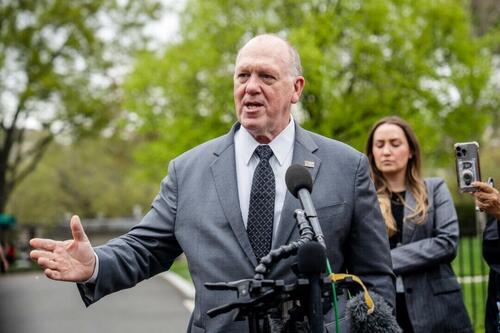
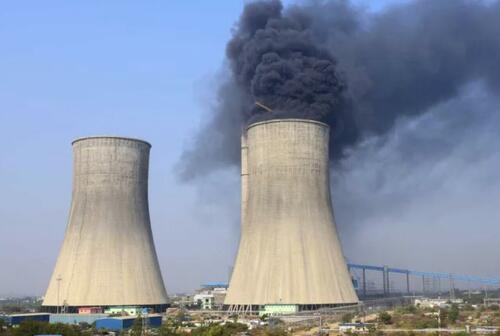

 AFP via Getty Images
AFP via Getty Images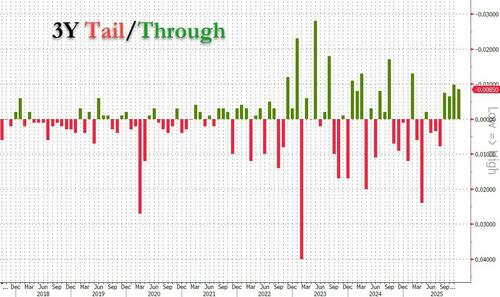
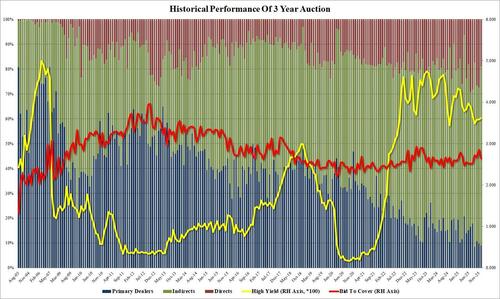

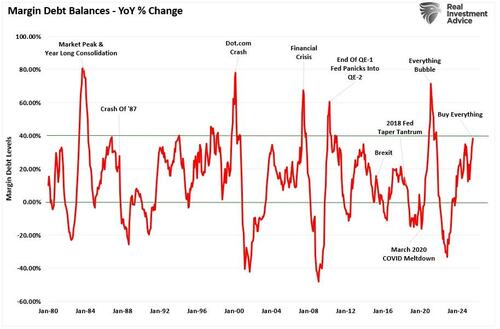

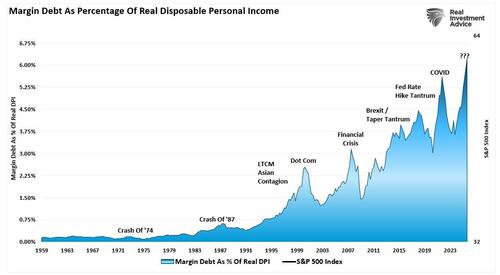

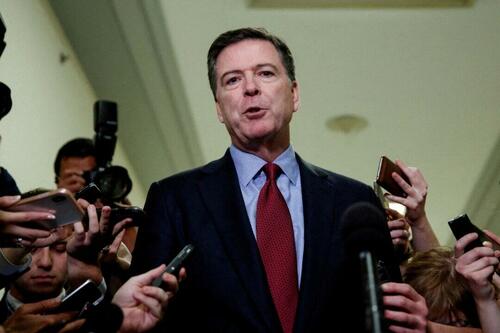
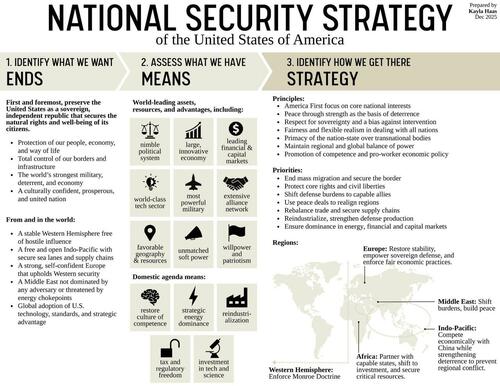
 Todd Combs was seen as Warren Buffett’s investment protégé
Todd Combs was seen as Warren Buffett’s investment protégé 
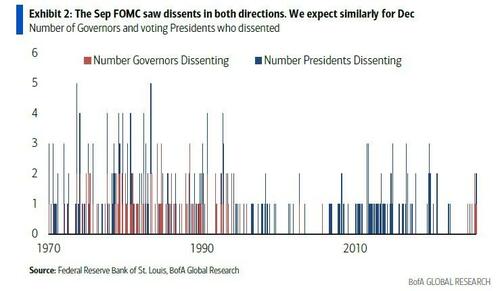

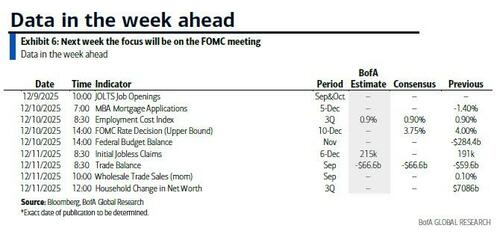
 Soybeans grow in a field in front of a barn sporting a large Trump sign in rural Ashland, Neb. (Nati Harnik / Associated Press)
Soybeans grow in a field in front of a barn sporting a large Trump sign in rural Ashland, Neb. (Nati Harnik / Associated Press)
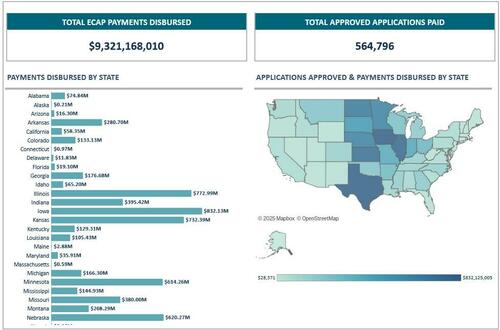
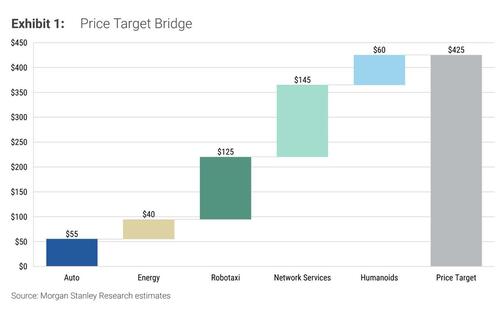
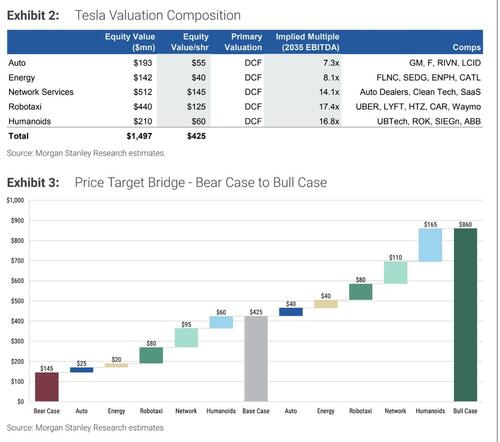
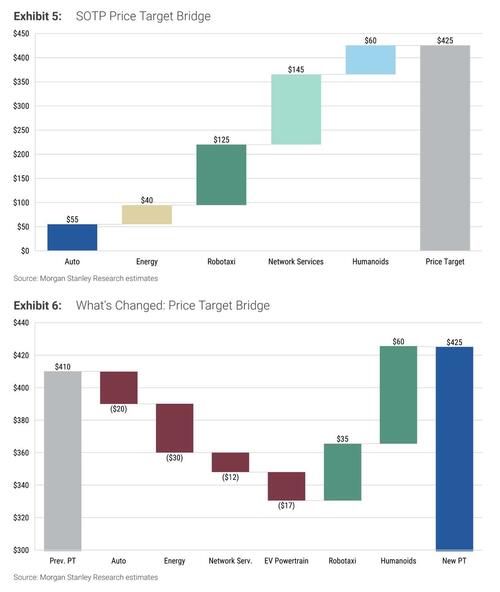

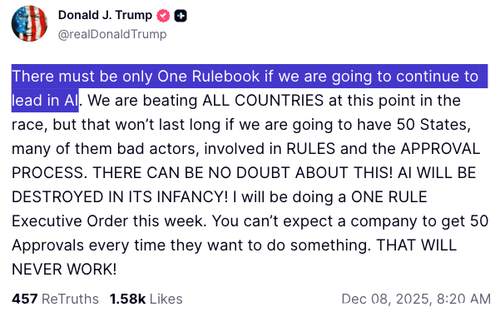

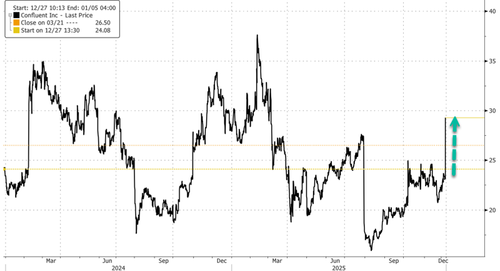
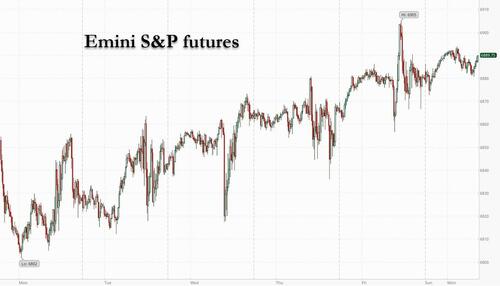
Recent comments